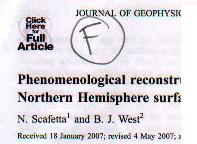Guest post by Bart Verheggen, Department of Air Quality and Climate Change , Energy research Institute of the Netherlands (ECN)
In Part I, I discussed how aerosols nucleate and grow. In this post I’ll discuss how changes in nucleation and ionization might impact the net effects.
Cosmic rays
Galactic cosmic rays (GCR) are energetic particles originating from space entering Earth’s atmosphere. They are an important source of ionization in the atmosphere, besides terrestrial radioactivity from e.g. radon (naturally emitted by the Earth’s surface). Over the oceans and above 5 km altitude, GCR are the dominant source. Their intensity varies over the 11 year solar cycle, with a maximum near solar minimum. Carslaw et al. give a nice overview of potential relations between cosmic rays, clouds and climate. Over the first half of the 20th century solar irradiance has slightly increased, and cosmic rays have subsequently decreased. RC has had many previous posts on the purported links between GCR and climate, e.g. here, here and here.
[Read more…] about Aerosol effects and climate, Part II: the role of nucleation and cosmic rays


 Browsing through the blogosphere recently, I came across an interesting little story about the scientific method, scientific progress, and un-scientific spin (h/t
Browsing through the blogosphere recently, I came across an interesting little story about the scientific method, scientific progress, and un-scientific spin (h/t 
 Last week, a Norwegian official-looking – and in my view – climatesceptic
Last week, a Norwegian official-looking – and in my view – climatesceptic 

 In a recent issue of the journal
In a recent issue of the journal